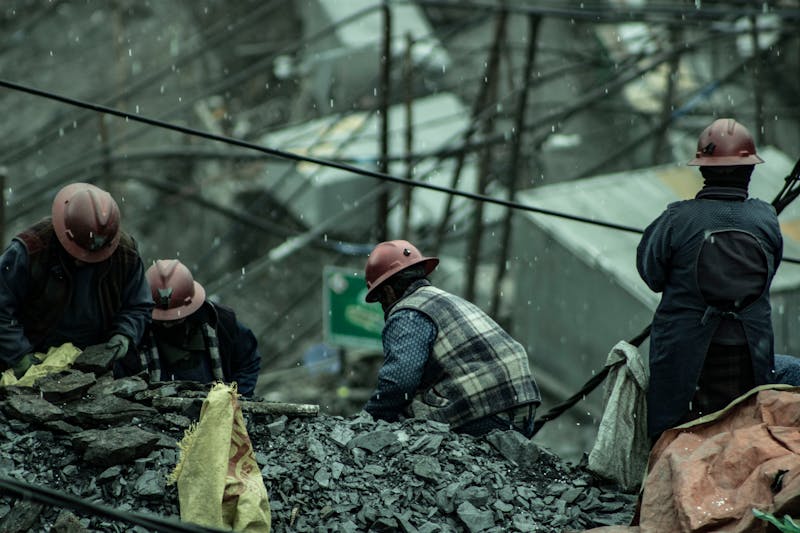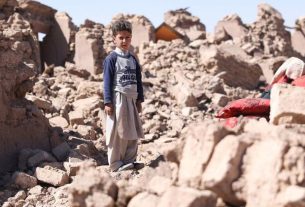Location: Johannesburg, South Africa
In a controversial move, the South African government has announced that it will not provide assistance to a group of illegal miners trapped inside a closed mine in the North West province. The miners, believed to be operating within the Stilfontein mine near the city of Klerksdorp, are reportedly suffering from severe shortages of food, water, and other basic necessities after police sealed off the entrances to the mineshaft. The government’s decision comes as part of its broader crackdown on illegal mining, known as Operation Vala Umgodi, or Close the Hole.
The Situation at Stilfontein Mine:
The Stilfontein mine, once a productive gold mine, has been closed for years, and many of its tunnels and shafts are now abandoned. Despite the risks and dangers, the site has become a hotspot for illegal miners, often referred to as “zama zamas.” These miners typically work without safety equipment or proper permits, extracting precious metals from abandoned mines in hazardous conditions.
Recent reports indicate that a large group of illegal miners has been operating in the Stilfontein mine, with authorities estimating that up to 4,000 miners could be trapped underground. The miners are believed to have been cut off from essential supplies after police conducted a series of operations to prevent further access to the site.
The South African Police Service (SAPS) launched Operation Vala Umgodi in an effort to combat illegal mining, which has become a significant problem in various parts of the country. As part of the operation, police have employed a strategy of cutting off supplies to the miners in an attempt to force them to surface and face arrest.
Government’s Response:
The South African government has stated that it will not intervene to provide assistance to the miners, citing its commitment to the rule of law and the dangers posed by illegal mining. Minister of Police Bheki Cele confirmed that no help will be provided to the miners, as their actions are in violation of South Africa’s mining laws.
In a statement, Cele remarked, “We cannot condone illegal activities. These miners are engaging in a dangerous and illegal activity, and we are taking steps to stop it. We are not in a position to help those who are breaking the law.” The government has also emphasized that the miners should return to the surface voluntarily and face the legal consequences of their actions.
Challenges Posed by Illegal Mining:
Illegal mining, particularly in abandoned or closed mines, has become a growing concern in South Africa. It is estimated that tens of thousands of zama zamas are operating across the country, particularly in the mining regions of the North West, Gauteng, and Free State provinces. These miners are often migrants from rural areas or neighboring countries, drawn to the prospect of finding gold or other valuable minerals.
The practice is fraught with dangers. Many illegal miners work in unsafe, poorly ventilated conditions without access to basic safety equipment. The mines are often unstable, and miners face the risk of collapsing tunnels, toxic gas inhalation, and fatal accidents. There are also reports of gang violence among illegal miners, as different groups fight for control over the mining sites.
Moreover, illegal mining is associated with environmental degradation and economic losses. Unregulated mining operations often lead to the destruction of the land and the contamination of water sources. Local communities also bear the brunt of the negative impacts, as illegal miners often work without regard for environmental regulations.
Operation Vala Umgodi:
Operation Vala Umgodi, launched by the South African Police Service, aims to address the growing problem of illegal mining in the country. The operation involves a combination of police raids, targeted arrests, and the sealing of illegal mining sites to prevent further exploitation of abandoned mines. The government’s strategy includes the enforcement of mining laws and increased surveillance of known hotspots.
One of the key tactics in the operation is to cut off supplies to the miners, which is intended to force them to surface and surrender to authorities. However, this approach has sparked criticism from some quarters, particularly human rights advocates, who argue that the miners should be treated with more compassion, given the dangerous and often desperate circumstances that lead them to work illegally in the first place.
In recent weeks, reports have emerged suggesting that the situation at Stilfontein is dire. Police rescued three miners from the shaft earlier this month, and the information obtained from these miners suggested that there could be hundreds, if not thousands, of others still underground. The authorities are facing growing pressure to manage the crisis while continuing to enforce the law.
Humanitarian Concerns and Criticism:
While the government maintains its stance, the situation has raised humanitarian concerns. Critics argue that the miners, many of whom are living in extreme poverty, should not be left to suffer in dangerous conditions. The decision not to intervene has sparked outrage among civil society groups, with some calling for more efforts to ensure the miners’ safety and well-being.
Human Rights Watch and other organizations have urged the South African government to prioritize the protection of life, even in the context of enforcing mining laws. They have called for humanitarian assistance to be provided to the miners, particularly those who may be trapped or injured underground, but also emphasized that efforts should be made to address the root causes of illegal mining, such as poverty, unemployment, and a lack of economic opportunities.
In response to this, the South African Human Rights Commission has suggested that while the government has a duty to enforce the law, it also has a moral responsibility to ensure that individuals’ basic rights are respected and protected, especially in life-threatening situations.
Conclusion and Looking Ahead:
The situation at the Stilfontein mine is emblematic of a larger, more complex issue facing South Africa — the rise of illegal mining and its associated dangers. While the government’s Operation Vala Umgodi aims to curb illegal mining and its negative impacts on public safety, the approach of denying aid to trapped miners highlights the ongoing tension between law enforcement and human rights.
The decision not to assist the miners underscores the government’s zero-tolerance stance toward illegal mining, but it also raises difficult questions about how best to address the socio-economic factors driving individuals into such dangerous, illegal activities. As the situation unfolds, it remains to be seen whether South African authorities will adjust their strategy to balance law enforcement with humanitarian concerns.
The government continues to face mounting pressure from both domestic and international stakeholders to ensure that the country’s mining laws are enforced while also considering the broader social and economic context in which illegal mining thrives.
References:
- South African Police Service (SAPS) – “Operation Vala Umgodi: Strategy Against Illegal Mining”
- Human Rights Watch – “Concerns Over South Africa’s Crackdown on Illegal Mining”
- The Guardian – “South Africa Denies Help to Trapped Illegal Miners in Stilfontein”
- BBC News – “Illegal Miners Trapped Underground as South Africa Intensifies Crackdown”
- Reuters – “South Africa’s War on Illegal Mining: Operation Vala Umgodi and Its Impact”



